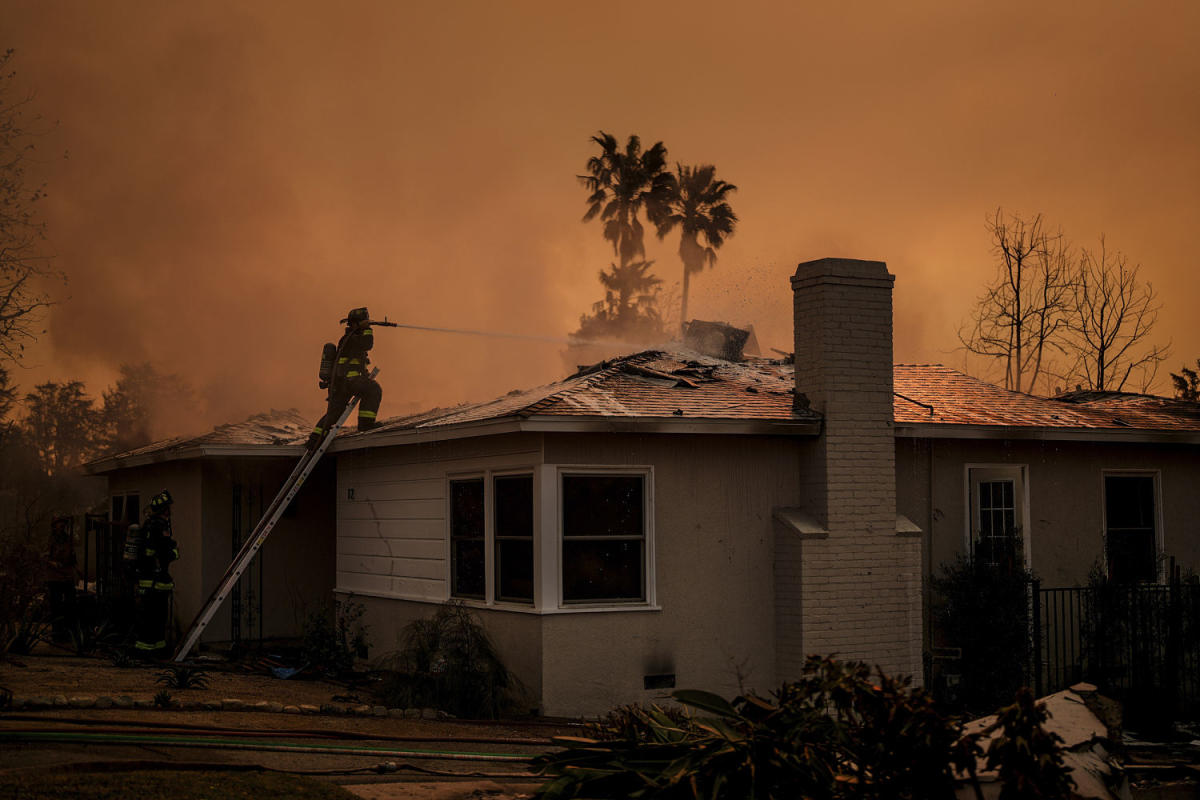
Los Angeles-area residents who already face warnings about their tap water could be without it for some time, experts told NBC News, owing to concerns about the damage done to local infrastructure and the chemicals released by wildfires.
At least two water departments have told residents not to drink their tap water because of concerns about potential contamination from the ongoing wildfires. And the possibility of chemicals’ and pathogens’ entering the water system has raised concerns about potential risks to human health, though it may take a while for tests to determine the scope of the problem, particularly since the fires are still active.
On Friday, the Los Angeles Department of Water and Power instructed people in the Pacific Palisades and adjacent communities to use bottled water for cooking, drinking, brushing teeth and washing dishes. The advisory warns that fire-related contaminants such as benzene — a chemical with the potential to cause cancer — may have entered the water system.
Advertisement
Advertisement
The Pasadena Water and Power Department also told many residents last week to switch to bottled water until further notice, citing concerns that debris may have entered the system. The Eaton Fire in the area damaged several reservoirs and pump stations, the department said, which could affect water quality.
“There’s definitely some level of contamination in these damaged systems. How much nobody knows,” said Jackson Webster, an assistant professor of civil engineering at California State University in Chico.
“Until it’s known what level of contamination is occurring in the system, it should just be assumed that they’re highly contaminated based on previous observations,” he added. “That’s why they’re issuing these ‘no drink’ notices.”
Webster said it’s common to see drinking water contamination after wildfires in urban areas — he pointed to the 2023 fires in Maui, Hawaii, the 2018 Camp Fire in Paradise, California, and the 2017 Tubbs Fire in Santa Rosa, California.
Advertisement
Advertisement
One telltale sign that drinking water has been contaminated, he said, is if a water system loses pressure. Excessive demand on the system — usually from residents running hoses and sprinklers while firefighters pull water from hydrants — causes water pressure to drop and contaminants to get sucked in like a vacuum.
The Los Angeles water department reported last week that water pressure dropped in Pacific Palisades after the system sustained four times its usual demand.
“The loss of pressure is concerning, and it should trigger some careful analysis of the water,” said Fernando Rosario-Ortiz, a professor of environmental engineering at the University of Colorado Boulder.
The Pasadena water department said Sunday that it had begun testing in key areas to determine when the water is safe to drink.
Advertisement
Advertisement
More in U.S.
Environmental engineers aren’t particularly concerned that the red fire retardant being dropped out of planes might wind up in people’s taps, since it largely consists of water and fertilizer. However, a study last year found that that type of retardant contains heavy metals.
“You might be upsetting the ecosystem, but you wouldn’t necessarily worry about it from a human health standpoint,” Young said.
A bigger concern is the ash from household materials. The Los Angeles-area fires have destroyed more than 12,300 structures. As the properties burned, materials such as carpeting, furniture and rubber tires were also incinerated. Fires can also melt the plastic pipes or water meters on people’s properties.
Those processes release gaseous chemicals known as volatile organic compounds, which may leach into the water system, where they’re often hard to eliminate. People exposed to the chemicals may experience nausea, difficulty breathing or eye irritation in the short term. Exposure over time has been associated with certain cancers, birth defects and cognitive impairment.
Advertisement
Advertisement
Two chemicals in particular, benzene and vinyl chloride, pose some of the greatest health risks, since they are known carcinogens.
Boiling water doesn’t destroy them, so the Los Angeles water department got rid of an earlier “boil water” advisory that aimed to protect residents from bacteria, viruses or parasites.
Thomas Young, a professor of civil and environmental engineering at the University of California, Davis, said it’s common to test water for the most hazardous chemicals like benzene first, then use that as an overall indicator of whether drinking water is safe to consume.
“When we design cleanup for these kinds of things, we focus on the compound of the most intense health concern. We feel like if we’ve addressed that, then the other ones are generally going to come along and be fine, because they’re much less potent,” he said.
Advertisement
Advertisement
The testing process could take weeks, months or more, depending on how much contamination is present. Catherine Carpenter, a research data analyst at Tracking California — a program that collects and analyzes water quality data — said testing of people’s homes in Paradise showed ongoing contamination long after the Camp Fire abated.
“It was almost a year after, but we were still finding high levels of benzene in the tap water,” she said.
If contamination levels are low, it’s possible to remove the hazard by flushing out water pipes, said Andrew Whelton, a professor of environmental and ecological engineering at Purdue University. But high levels of contamination may require replacing the pipes altogether, he added.
Whelton said it’s possible that neighborhoods where homes didn’t burn down could still have contamination in their water supplies — though it’s too soon to know yet.
Advertisement
Advertisement
“The highest likelihood of where you find contamination in the water distribution system is around destroyed buildings,” he said. “But when firefighters are fighting a fire … sometimes they can suck contaminated water and drag it across the system.”
This article was originally published on NBCNews.com
EMEA Tribune is not involved in this news article, it is taken from our partners and or from the News Agencies. Copyright and Credit go to the News Agencies, email news@emeatribune.com Follow our WhatsApp verified Channel



